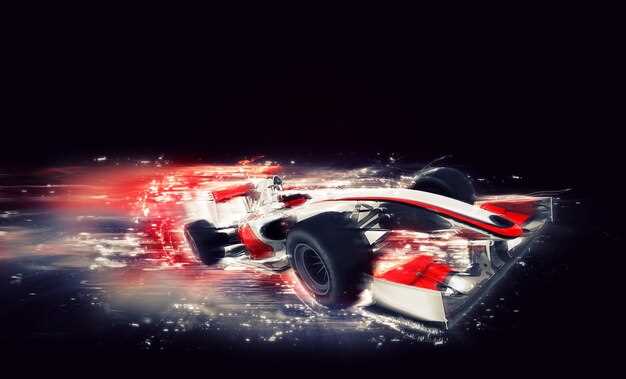
Aerodynamics plays a crucial role in the world of motorsport, fundamentally influencing racing performance and overall speed. Within the realm of racing, teams invest significant resources into understanding and optimizing airflow around their vehicles. The primary goal is to enhance downforce, which is essential for maintaining grip on the track and achieving better cornering speeds.
Downforce is generated primarily through the design of various aerodynamic components, including wings, splitters, and diffusers. These elements work together to create a pressure differential that effectively “pushes” the car downward, increasing tire adhesion and stability. A well-designed aerodynamic package can mean the difference between winning and losing, especially in high-stakes competitions where milliseconds count.
Furthermore, the interplay between downforce and drag cannot be overstated. While maximizing downforce is critical for handling, teams must also mitigate drag to ensure that cars can reach their top speeds on straights. This delicate balance is what makes aerodynamic optimization a fascinating aspect of racing engineering, as even minor adjustments can yield significant performance gains.
Optimizing Airflow for Maximum Speed on the Track

In motorsport, achieving maximum speed relies heavily on the optimization of airflow around the vehicle. Effective management of airflow not only reduces drag but also enhances downforce, contributing to better stability and cornering capabilities.
The design of a racing vehicle’s body plays a crucial role in how air interacts with its surfaces. Streamlined shapes help to minimize turbulence, allowing air to flow more smoothly over the car. This reduction in drag is essential for achieving higher velocities on straight sections of the track.
Another important factor is the configuration of the front and rear wings. Properly designed wings can generate downforce, which pushes the car onto the track, enhancing grip. Adjusting the angle of attack on these wings can fine-tune the balance between downforce and drag, optimizing performance for specific track conditions.
Ventilation systems also play a key role in airflow management. Strategically placed air intakes can direct airflow to critical components, such as the engine and brakes, ensuring they operate at optimal temperatures. This cooling effect is vital for maintaining performance, particularly over prolonged races or in high-speed scenarios.
Additionally, the underbody design can significantly influence airflow. Ground effect designs create a low-pressure zone beneath the vehicle, increasing downforce without additional drag. This principle has been successfully utilized in formula racing and can be adapted to various racing classes.
Finally, advanced computational fluid dynamics (CFD) tools allow teams to simulate and analyze airflow patterns around their vehicles. These simulations provide valuable insights, enabling engineers to make informed decisions about modifications that can enhance aerodynamic efficiency.
In conclusion, optimizing airflow is essential for maximizing speed on the racetrack. By focusing on body shape, wing configuration, ventilation, underbody design, and leveraging modern simulation tools, racing teams can achieve significant performance improvements, making the difference between winning and losing.
Understanding Downforce: Balancing Grip and Drag
Downforce is a crucial aerodynamic force that enhances a racing car’s grip on the track. It is generated by the car’s design, particularly the body shape and aerodynamic components such as wings and diffusers. The primary function of downforce is to push the car towards the ground, increasing tire adhesion and allowing for faster cornering speeds.
As downforce increases, so does the level of grip available to the tires. This additional grip enables drivers to navigate turns more effectively, maintain higher speeds, and reduce the likelihood of losing control. However, achieving optimal downforce involves a careful balance, as excessive downforce can lead to increased drag, which hampers acceleration and straight-line speed.
Drag is an aerodynamic force that opposes the motion of the car. It is comprised of two main components: parasitic drag, caused by air friction against the car’s surface, and induced drag, which is a byproduct of generating lift or downforce. While downforce is beneficial in corners, it directly contributes to induced drag, leading to slower speeds on straights. This is a critical consideration for race engineers when designing cars or tuning aerodynamics to suit specific tracks.
The art of balancing downforce, grip, and drag is essential for optimal racing performance. Teams often use sophisticated simulations and wind tunnel testing to refine their aerodynamic setups. The goal is to maximize cornering capabilities while minimizing drag to enhance overall speed. Adjustable aerodynamic elements, such as movable wings, provide teams with the flexibility to adapt to varying track conditions and strategies during a race.
In conclusion, understanding downforce is vital for any racing team aiming to achieve competitive edge. By effectively balancing grip derived from downforce and the penalty of drag, teams can optimize their vehicles for both cornering prowess and top speed, ultimately leading to improved racing performance.
Real-World Applications: Case Studies of Successful Aerodynamic Designs

Aerodynamics play a critical role in enhancing racing performance, particularly through the generation of downforce. This section examines several successful aerodynamic designs implemented in various racing categories, illustrating how these innovations have led to improved speed and handling on the track.
-
Formula 1: The Mercedes W11
The Mercedes W11, driven during the 2020 Formula 1 season, is a prime example of advanced aerodynamic engineering. Its design included:
- Innovative front and rear wings that maximized downforce while minimizing drag.
- A complex floor design that enhanced airflow under the car, increasing stability at high speeds.
- Advanced cooling systems integrated into the aerodynamics, allowing for optimal engine performance without sacrificing downforce.
These features allowed the W11 to achieve exceptional cornering speeds and overall performance, contributing to an impressive number of race wins that season.
-
NASCAR: The Ford Mustang
The Ford Mustang used in NASCAR races incorporates a unique aerodynamic package tailored for oval track competition:
- Modified grille and nose designs that improve airflow and reduce lift.
- Rear spoiler adjustments to increase downforce, ensuring stability during high-speed turns.
- Streamlined body shape to decrease drag, enhancing straight-line speed without compromising control.
This combination of aerodynamic features has allowed drivers to maintain speed while navigating tight corners, improving overall race performance.
-
Le Mans Prototype: Audi R18
The Audi R18, a competitor in the Le Mans endurance races, exemplifies the impact of aerodynamics in a multi-class racing environment:
- Innovative use of a hybrid powertrain combined with aerodynamically efficient bodywork.
- Deployable aerodynamic elements that adapt to different racing conditions for optimal downforce.
- Extensive wind tunnel testing that refined its design to maximize grip and reduce drag across various track layouts.
With its advanced aerodynamics, the R18 not only demonstrated impressive speed but also durability over long distances, making it a dominant presence at Le Mans.
These case studies highlight how effective aerodynamic designs can significantly enhance racing performance by increasing downforce and optimizing drag. As racing technologies continue to evolve, the focus on aerodynamics remains central to achieving speed and agility on the track.






